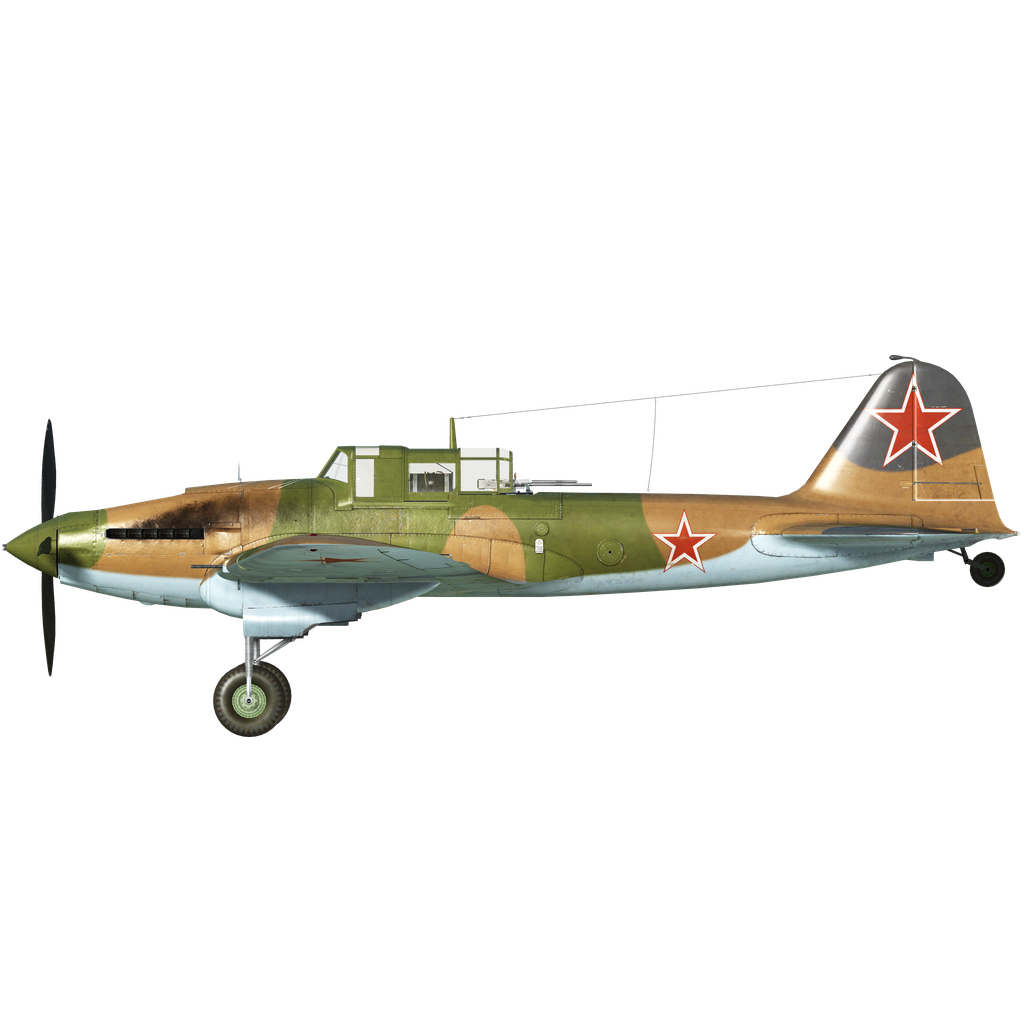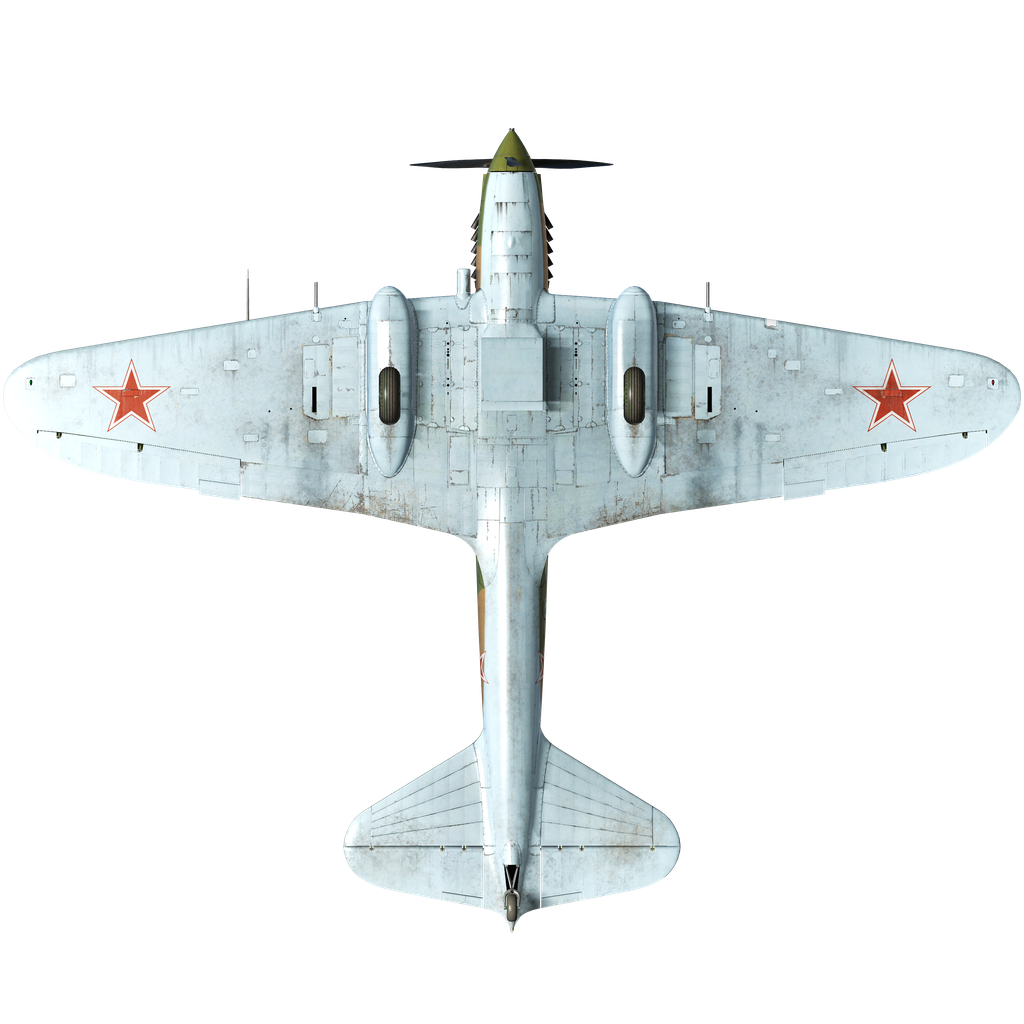Developed by S.V. Ilyushin, the Il-2 attack plane became the main attack aircraft of Soviet aviation during the Great Patriotic War and at the same time the most-produced combat aircraft in the world.
The first flight of the two-seat BSh-2 (TsKB-55) armored attack aircraft took place in 1939, but even after modifications the aircraft did not meet the requirements of the technical specifications: it did not develop the required maximum speed and had an insufficient flight range. Therefore, the engine of the AM-35 high-altitude fighter was replaced by a specially designed AM-38 engine, the aircraft was converted into a single-seat version, the fuselage was lengthened, the canopy was changed, the armor on the rear hemisphere was reinforced, and an additional fuel tank was installed. The new aircraft, with the designation TsKB-57, took off for the first time on October 12, 1940, and went into mass production in March 1941.
In the early days of the war, it became clear that single-seat attack aircraft were suffering unreasonably high losses to enemy fighters, but there were strict orders not to slow down the rate of production of attack aircraft, which would of course have resulted from the introduction of a new two-seat modification into production. To reduce losses from enemy fighters, single-seat versions were handmade into two-seat versions in frontline formations.
Only at the end of 1942 did the Il-2 officially become a two-seater again. The gunner's cabin was outside the armored fuselage, directly behind the armored partition of the rear fuel tank. The gunner sat on a transverse canvas strap. He was shielded from above by a transparent canopy that folded to the side; from behind he was protected from enemy fire by a 6mm armored partition, while there was no protection from below or from the sides. The Berezin large-caliber turret machine gun was mounted on a half-turret installation and had firing angles of 35° up, 7° down, 25° to the left of the gunner, and 35° to the right. The increased load on the tail wheel forced an increase in its diameter and a strengthening of the fork design. The addition of a gunner's cockpit increased the weight of the attack aircraft by 270 kg, which slightly worsened its take-off characteristics and longitudinal stability. To reduce the takeoff distance, a 17° flap angle was introduced, allowing this parameter to be maintained. Longitudinal stability was improved thanks to new wings with a sweep angle of 15° along the leading edge. However, the increased weight of the aircraft made it difficult to control and maneuver, which necessitated the installation of a more powerful engine to increase power. The Mikulin design bureau created a boosted version of the AM-38F with a take-off power of 1,720 hp. The time of continuous operation in takeoff mode was limited to 5 minutes, and the rated power at a design altitude of 750 m was 1575 hp.
Since February 1943 only this modification was produced. The installation of a more powerful engine increased the maximum speed and rate of climb on the ground, while the lower altitude of the engine reduced the maximum flight speed at altitude, which was uncritical for an attack aircraft operating mainly at low altitudes. The take-off characteristics of the attack aircraft increased significantly and, with a bomb load of 400 kg, proved to be practically equal to the take-off characteristics of the single-seat Il. However, the 1943 modification of the Il-2 differed from previous models not only by the installation of a new engine. The tanks inside the fuselage were protected by fiberglass, which improved the protection of the aircraft. From 1944, the aircraft was equipped with a metal wing with a modified sweep along the leading edge, which improved controllability.
Il-2 attack aircraft of the 1943 model were produced almost until the last year of the war, gradually being replaced in production by new aircraft of the Il-10 type.
The undoubted advantages of the IL-2 design are expressed in its excellent performance characteristics: high reliability and maintainability. The aircraft was extremely unpretentious at all stages of flight preparation and execution. "It was one of the most accessible aircraft to master," wrote the two-time Hero of the Soviet Union, Air Marshal A.N. Efimov, in his memoirs. - Flying itself was not difficult. When flying over a target or in a dogfight, the pilot's attention was not distracted by complex manipulations of instruments and assemblies in the cockpit. The plane forgave the pilot even gross mistakes in piloting, which was very important in carrying out attacks and fighting when there was no time to watch the instruments. "I don't know of a single case where an aircraft lost control or went into a dive due to pilot error.
1. E. Chernikov “Armored attack aircraft Il-2” M-Hobby 1998
2. V. Perov, O. Rastrenin “Il-2 Sturmovik”, Aviation and Cosmonautics magazine No. 5-6 2001
3. Materials from the site airwar.ru
Indicated stall speed in flight configuration: 144..159 km/h






